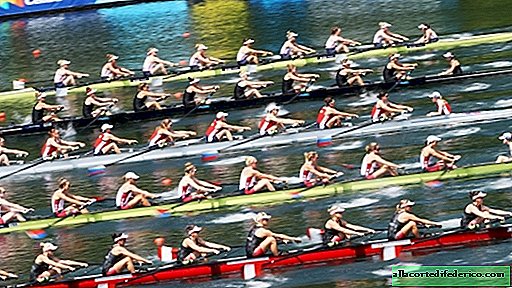Robots were seated at the oars to check which rowing method is better.
People do not really stand on ceremony with robots. Either they try to kick them, or they are forced to carry plates of food behind them, and recently French scientists planted robots at the oars and forced them to row in different ways. True, they did this not because they had a day, but simply conducted an experiment, figuring out which rowing method would provide the best speed.
Sync it
Two styles have long vied in rowing: synchronous and asynchronous. The first involves the simultaneous movement of all the oars, and the second - their alternate lowering into the water. Advocates of the first style argue that the simultaneous jerk gives great acceleration. Asynchronists remind us that in this case, the boat moves jerkily, while the asynchronous style allows you to withstand a more uniform speed.

Researchers from the Polytechnic School of Paris decided to compare the effectiveness of the two styles, and for the purity of the experiment they planted robots at the oars - at least, at the crucial moment, none of them will scratch their nose or be distracted. Scientists built a two-meter model of a fiberglass boat, which repeated the shape of a full eight-seater 20-meter boat weighing 100 kg. Taskmaster with a drum does not act on robots, so their actions were coordinated using the Arduino microcontroller.
The robots sat in the boat with their backs forward, like professional athletes. They sailed on the boat in both styles. First, synchronously, and then asynchronously: all the rowers lowered the oars into the water alternately at a certain interval, and the first robot started moving at the moment when the last one completed it. The average boat speed was approximately 0.36 meters per second. The experiment itself was filmed on video.
Rowing together fun
The results showed that with synchronized rowing the speed of the boat really fluctuates more. But a more uniform movement did not help the asynchronous style: the average speed decreased by five percent.
True, scientists after the experiment admitted that they did not take into account yet another parameter in their model: the weight of the athletes themselves, which, when synchronized rowing, creates additional inertia. But in this case, the gap between the speeds would be even greater.
Perhaps next time, scientists will make rowers even more like humans - for more accurate results. In the meantime, the moral is this: never break away from the team, even if you are a robot.

















